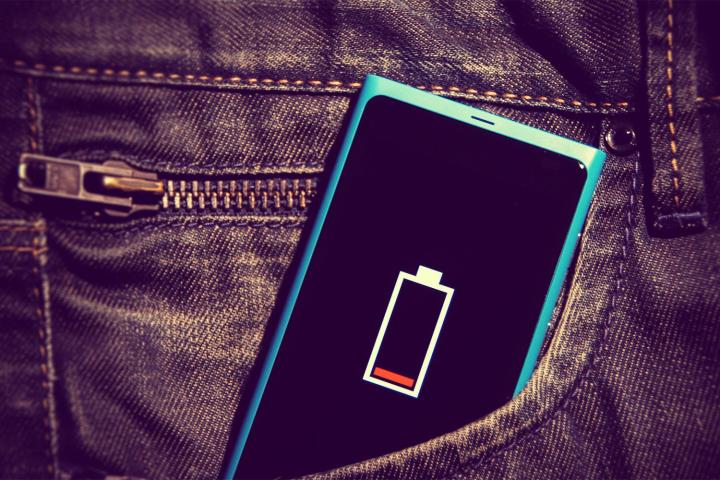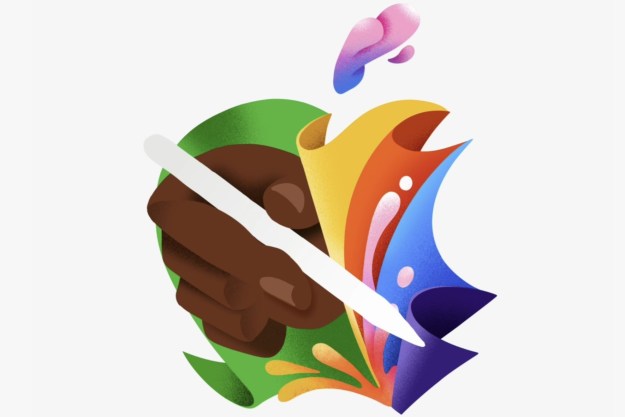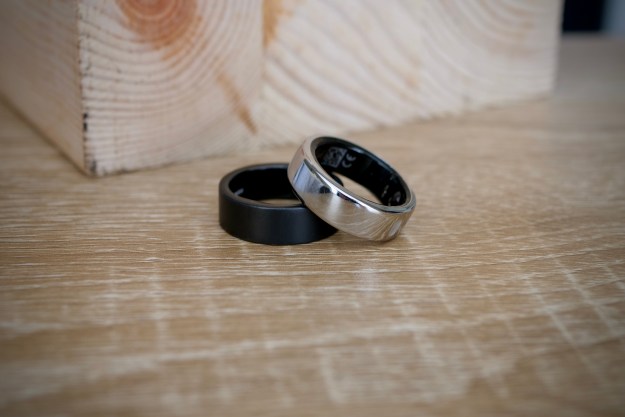
At first, it seems like the blame lies with smartphone manufacturers. You might assume the batteries that power the flagships from Samsung, LG, Motorola, etc are chosen by the respective engineers. The truth, though, is more nuanced: the lithium-ion batteries in almost all devices today haven’t radically changed since they came out 23 years ago. This lengthy stagnation has forced companies to compromise on smartphone size, battery life, or both. Either a device like a phone can be thin, or it can get decent battery life.
So how did we get to this point, exactly, and where are we going? Improved battery designs lie on the horizon, but will they ever hit the market? Do any new battery technologies have a real chance at ending our reliance on lithium ion, and will other solutions help make today’s batteries bearable in the meantime? We endeavored to find out.
How batteries work
The first rechargeable lithium-ion batteries were explosive. Literally. Sony and chemical company Asashi Kasei learned this the hard way when, in 1991, the companies’ first commercial metal-based lithium battery burned through a cellular phone and inflicted burns on a man’s face.
The lithium-ion batteries in almost all devices today haven’t radically changeed since they came out 23 years ago.
That didn’t stop lithium-ion cells from becoming the dominant source of power in portable devices, though. The reason? They’re much more energy dense than the alternatives, for one, but also relatively maintenance-free. Unlike other batteries, they don’t require discharge, don’t have memory, don’t experience cell-killing sulfation build-up, and contain fewer toxic metals than most other batteries. Lithium-ion batteries are, simply put, one of the most versatile mass-produced batteries around.
But they’re limited in other ways, chiefly energy density. The reason, Vice President of marketing at Leyden Energy Noam Kedem told CNET in an interview, is because “[v]olumetric energy density falls of as [lithium ion cells] gets thinner because the packaging takes up a higher percentage of energy volume.” What does that mean for the average consumer? If you want great battery life, you’ll have to compromise on size.
Take this example: the Nokia Lumia 1520 can last up to 107 hours on a charge, but measures 6.4 inches across – the size of a phablet. The 6.34-inch Huawei Ascend Mate2 4G lasts about the same. The only smaller phone that holds its own in the realm of giants is the Xperia Z3 Compact, which manages to eek out 101 hours on a good day. But accomplishing that feat required Sony designers to opt for a 720p display, an outlying spec for a smartphone priced at $630.

The truly disappointing part is that even those big batteries won’t last very long. Apple rates the iPhone’s battery at 80 percent of capacity for 50 charges, which, assuming you charge your phone once a night, is about a year and a half.
Beyond those constraints, there’s the issue of safety. The lithium-ion batteries of today may not be as dangerous as the metal-based designs of yesteryear, but blunt force can still cause them to short circuit, disintegrate, or release harmful gas. Failures are rare, but the results can be dramatic — a pierced battery pack two years ago caused a Tesla Model S to burst into flames, and a viral video illustrates just what can happen when you hit a Samsung Galaxy S5 battery with a hammer.
Given the myriad issues, it’s no surprise there’s a strong desire among both consumers and device makers for smaller, denser, and safer alternatives. The body of inquiry on that front is promising, but the trick, it turns out, is not necessarily the research, but adapting designs for mass production. Reducing the costs associated with fabrication and achieving efficiency are often the toughest part of bringing new batteries to market.
The batteries of the future are coming, slowly
There are better batteries coming, and some come from ideas in the past. Take research from the University of Stanford, for example. The first lithium battery designs contained lithium anodes, anodes quickly found to be inefficient and unsafe, but scientists at Stanford recently managed to solve those problems by isolating lithium from the electrolyte with a special, protective layer of carbon nanostructures. The result is a doubling, maybe tripling of battery life.
Batteries made from sand have as much as 3X the capacity and lifespan of traditional batteries.
A pure lithium battery is the putative successor to today’s batteries — engineering lead on the Stanford project Yi Cui says the material has the “greatest” potential of all the materials that can be used as anodes. But production’s the rub: the Stanford team’s design has yet to reach the requisite industry threshold for efficiency (99.9 percent) for commercialization, and even when it does, the complexity of fabrication could result in a high price tag — somewhere in the range of $25,000 for vehicle-sized battery, Secretary of Energy Steven Chu told Phys.org.
That’s why scientists at the University of California Riverside turned to sand. They collected granules with a high percentage of quartz, ground them with salt and magnesium, and finally heated them to remove oxygen and extract pure silicon. The final material has as much as three times the capacity and lifespan of traditional batteries.
But batteries from sand aren’t feasible for the handsets in our pockets yet, either. The researchers have yet to discover a method of producing the silicon sand at scale; the largest battery they’ve produced to date is the size of a small coin.

The barrier to market for new designs is so severe that device companies like Apple, Google, and Dyson have begun working directly with battery firms to accelerate development. But in the absence of any significant breakthroughs, hardware and software makers have developed workarounds of their own to address our intense desire for longer-lasting smartphones, tablets, electric cars, and laptops.
One of the causes of rapid battery drain is Wi-Fi — modern handsets monitor nearby wireless traffic constantly, expending a lot of energy examining packets and looking for clear channels in environments full of interfering signals. University of Michigan computer science and engineering professor Kang Shin and doctoral student Xinyu Zhang came up with a solution, which they call Energy-Minimizing Idle Listening (E-MiLi).
E-MiLi saves power by slowing down the internal wireless chip while Wi-Fi isn’t in use, which Shin and Zhang say results in an average energy saving of about 44 percent. Moreover, E-MiLi is compatible with 92 percent of mobile devices. But there’s a catch, as always: it relies on wireless routers with special firmware to work.
Another idea that researchers are mulling around with is rapid charging. That’s an umbrella term that encompasses everything from optimized software to beefed-up capacitors, but the concept is simple: power adapters with very, very short charging cycles. In mid-2013, an 18 year-old student showcased a supercapacitor at Intel’s Science and Engineering Fair capable of charging a smartphone battery in 30 seconds. The Blueshift Bamboo speaker, which operates on a similar principle, can charge in minutes and last for six hours.
Some supplementary chargers are far crazier. A luxury smartphone made by Tag Heuer has photovoltaic layers that recharge its battery from sunlight. Researchers at UC San Diego have created a temporary “battery tattoo” that’s charged by sweat. And scientists at Nokia and at the Queen Mary University of London are currently working on “nanogenerators” designed to generate electricity from sounds like human voices, traffic, and music.
Some battery improvements are already happening
As new models of battery continue their inexorable but lethargic trudge toward commercialization, electronics and software companies find themselves in much the same position they’ve been for the past 23 years: they have to work around limitations of an outdated technology. Some have been more successful than others at treating the symptoms — LG implemented a layered lithium ion design in the G2, for instance, that it claimed boosted capacity by 16 percent — but as long as the causes of low capacity and poor longevity go unaddressed, not much will change.
The unfortunate reality is that, with the exception of external chargers and third-party batteries, there really isn’t a good alternative to lithium-ion batteries yet; most research remains in the prototype stage, the interim and aftermarket solutions aren’t all that practical — your next smartphone isn’t really that likely to sport a solar panel, or energy-saving Wi-Fi software, or nanogenerators.
There’s no silver bullet to the battery industry’s lithium-ion woes right now, but we have seen some breakthroughs from institutions like Nangyang Technological University, where researchers have developed a fast-charging titanium dioxide anode. Development of alternatives is also accelerating. In April, scientists at NASA licensed technology that can convert heat from car exhausts into usable electricity, and researchers at Japanese company Fuji Pigment have made steps toward the commercialization of aluminum-air technology, batteries with a theoretical capacity 40 times greater than lithium-ion.
Give it a few more years
Sure, lithium-ion batteries have their benefits: they’re cheap, easy to manufacture, and comparatively stable. But they’re also huge and don’t last long. It’s no surprise there’s a hunger for alternatives, and while none are really here yet, there’s reason to be hopeful. More researchers are tackling the “lithium-ion problem” than ever before. Some alternative battery designs are nearing commercialization, too. And a few of the half measures aren’t half bad in the meantime — Qualcomm’s QuickCharge, a so-called fast charging technology built into some smartphones, dramatically expedites charging.
It’s true that lithium-ion’s death knell hasn’t quite arrived, but it’s closer than it’s ever been. It’s not unreasonable to project that in five or fewer years, smartphones that last less than a few days on a single charge will seem positively (no pun intended) prehistoric.
Editors' Recommendations
- New 260-watt battery charge tech goes from 0% to 25% in just 1 minute
- Vivo’s new charging tech rockets phone your battery to full in only 13 minutes



